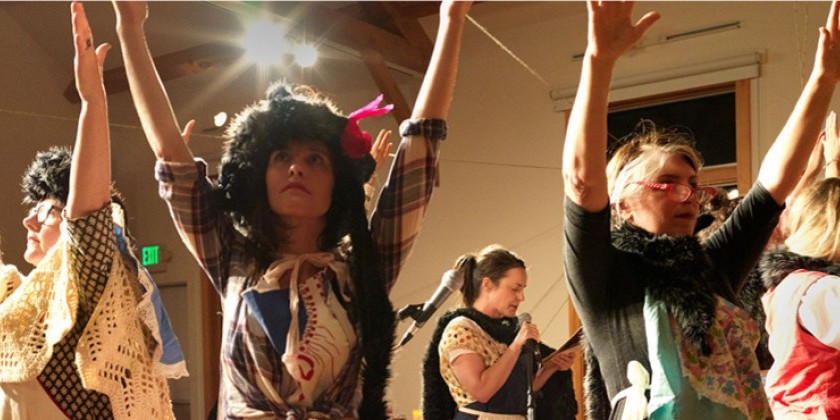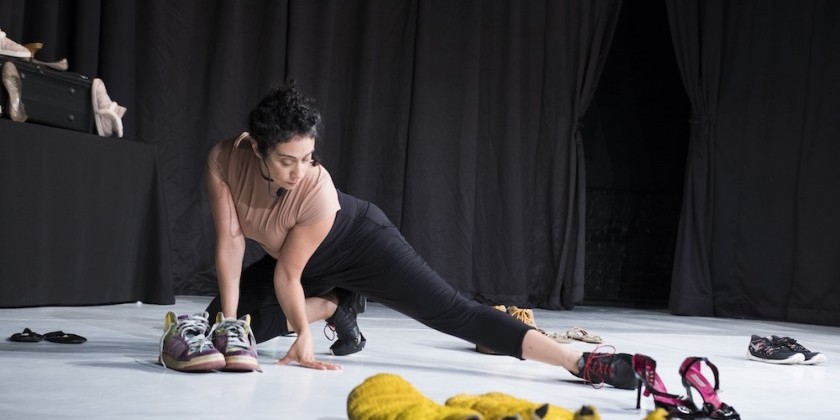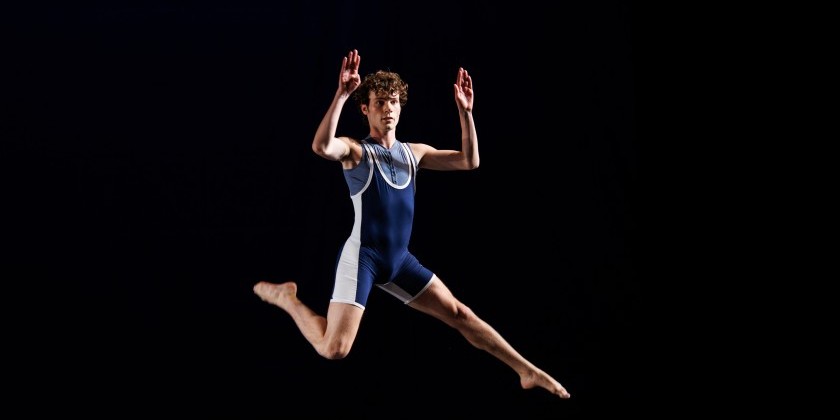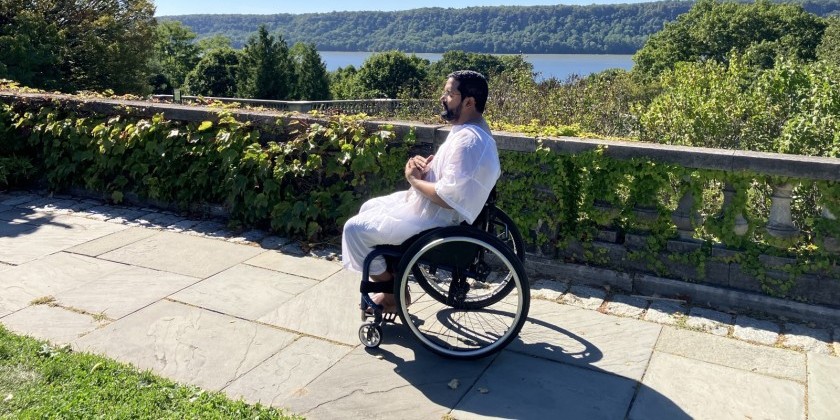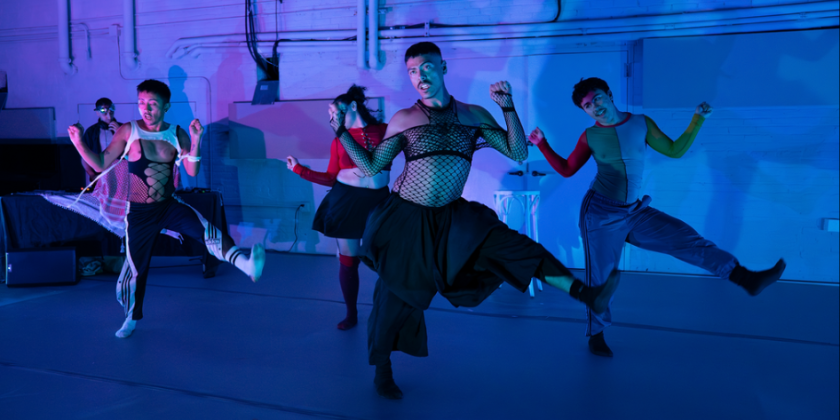IMPRESSIONS: 32nd Annual Performance Mix Festival Featuring Larissa Velez-Jackson, Lily Bo Shapiro, and Antonio Ramos with Awilda Rodriguez Lora
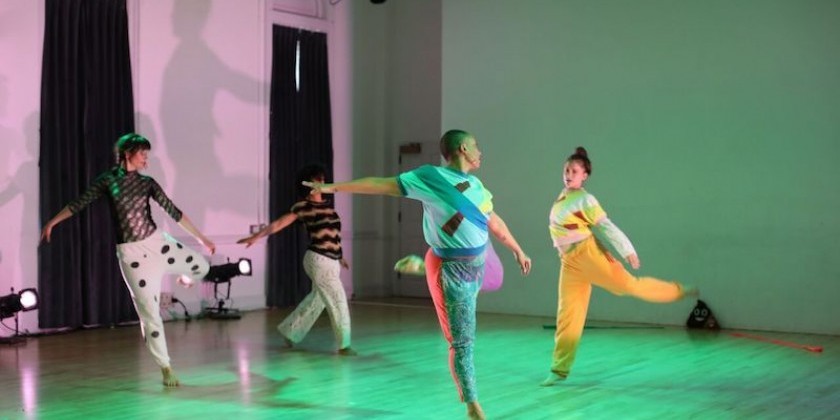
June 10, 2018, 4pm show
University Settlement
Larissa Velez-Jackson, Lily Bo Shapiro; and Antonio Ramos with Awilda Rodriguez Lora
Prepare yourself for the unexpected. Performance Mix Festival celebrates untraditional approaches and ideas by bringing together 30-plus artists over four days. Curated by New Dance Alliance Founder and Director Karen Bernard, the event takes audiences on a wild ride into the unforeseen.
That ride can often be bumpy. We are, after all, leaving the comfortable shores of the traditional and sailing onto a vast sea of possibility. So what determines the success of that journey? Perhaps it is a strong and compelling hook that evokes something familiar and recognizable to the viewer — even if it is quite abstract. Perhaps it is a cohesive blending of mediums that illuminate an idea in a fresh way. Walking the fine line between challenging and engaging an audience or turning them off is no easy task, and one met with varying degrees of accomplishment during the festival’s final show.
The highlight of the 32nd Annual Performance Mix Festival is Star Crap Method for Dancers: Healing Edition, conceived and directed by Larissa Velez-Jackson. A little like an acid trip, a little like a 5-year-old’s birthday party, Star Crap Method satirizes the various healing modalities dancers undertake, using spoken word, dialogue, dance, and gesture.
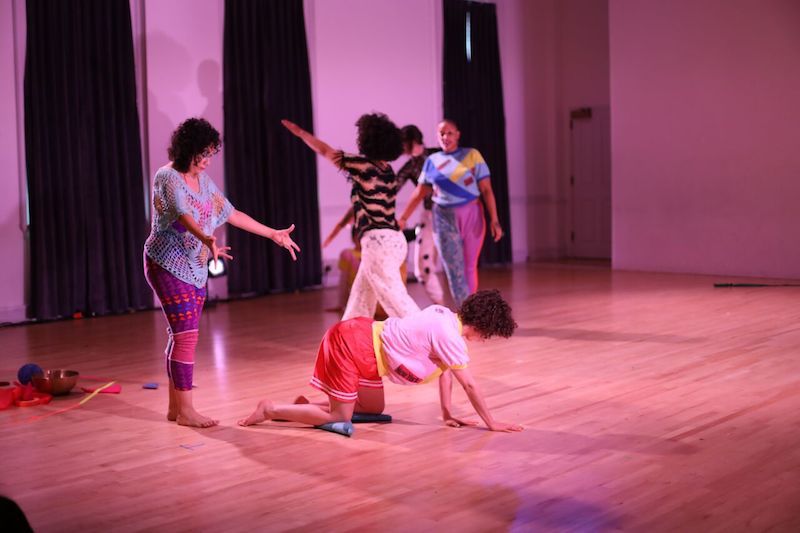
The piece opens with a dancer lying on the floor, outlined in bright pink gaff tape, surrounded by sounding bowls, fabric, and pillows as if she were laid out for some strange burial ritual. Velez-Jackson moves around her, shaking healing energy and banging on the bowls. Four other performers, arranged in a diagonal line, begin a personal space exploration, circling and undulating their wrists, spines, ankles and necks as if slowly warming up. These organic movements develop into bigger, arcing gestures. Slicing and traveling movements then evolve into a conversation where each dancer picks up the last movement idea from the previous dancer and builds on it.
The speaking element emerges slowly as a narration of the healing process — a normal occurrence in many modalities. Once presented as a recognizable factor, the phrases spoken become less connected and more silly: “I feel like if I engage my core right now it will really help Talya.” What follows are a series of hilarious anecdotal phrases that begin to make less and less sense in any linear way, but the parody rings true for anyone who has engaged in bodywork sessions.
Like children who blurt out whatever comes to their minds, the performers create a whimsical atmosphere that feels comfortable, engaging, and real. The commitment and vulnerability of each performer provide a solid entry point for audiences to connect to the scenario unfolding on stage.
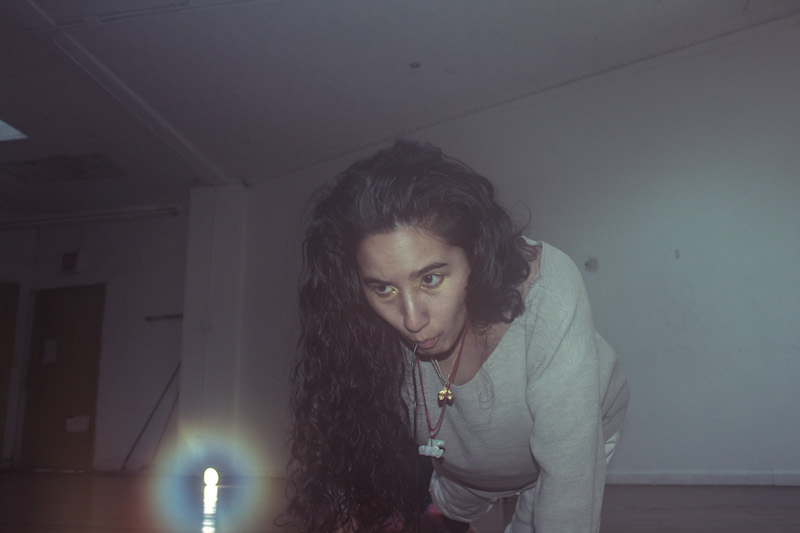
Much less engaging was gorgon, again (again) by Lily Bo Shapiro. Sitting on a darkened stage with a small amplifier and lapel microphone, Shapiro makes distorted sounds for roughly 20 minutes while background lights pulse a subtle red and purple. As the title promises, Shapiro evokes a scary and repulsive creature. Sometimes she sounds like the growling of a whale’s stomach, sometimes more like an exotic string instrument. Shapiro puts the microphone in her mouth, twirls it around her fingers, or blows and clicks her tongue into it.
I kept hoping the piece would go somewhere. Perhaps she would record her vocalizations and play them back on a loop as she mimicked the sounds with her body, but no such progression took place. The soundscape abruptly ends and she walks off stage, leaving me wondering why? I could not find any interest or purpose in it, which left me frustrated and annoyed.
Concluding the evening, Las Que No Son Bailas Son Hermosas (excerpt of El Pueblo de Los Olvidados) is an in-your-face commentary on Hurricane Maria, which devastated Puerto Rico in 2017. Maybe a little too much in your face . . .
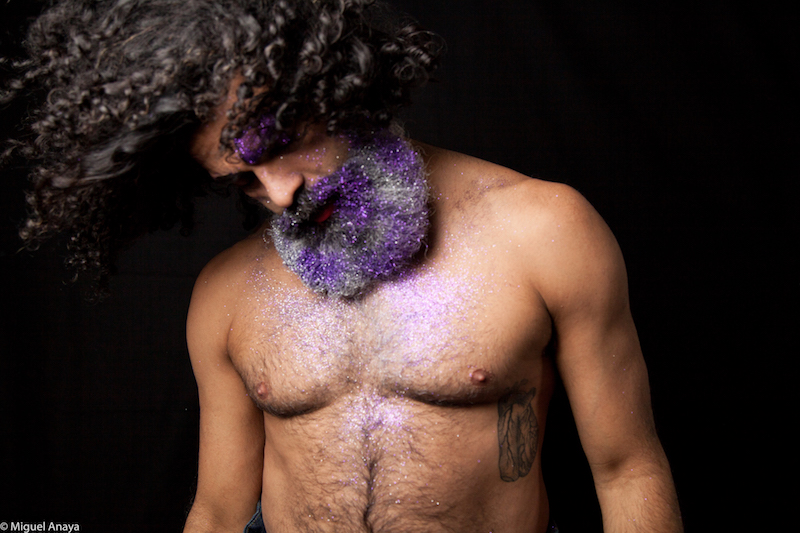
Stripping off all their clothing, performers Antonio Ramos and Awilda Rodriguez Lora climb into the audience, over chairs, and the people sitting in them. Body parts normally reserved for intimate encounters come dangerously close to contacting us without invitation. Shouted words, props, and audience participation highlight the gross underestimation of the storm’s severity by the federal government, the overreliance on local officials and private entities for clean up, and the misrepresentation of the number of casualties.
From the audience where he is equipped with a bucket and a rope thrown to him by Lora, Ramos collects items. He sends them down the rope to Lora, who is frantically waiting on the shore. A cellphone, a shoe, one dollar, and a program make it into the bucket, representing the lack of meaningful aid and the desperate need Puerto Rico faced in the storm’s aftermath. At times humorous and at others excessive, Las Que No Son Bailas Son Hermosas, like the preceding pieces in the festival, offered both challenges and interesting points of engagement on this evening’s wild ride into the unforeseen.
The Dance Enthusiast Shares IMPRESSIONS/ our brand of review and Creates Conversation.
For more IMPRESSIONS, click here, and to read our interview with Karen Bernard, click here.
Share your #AudienceReview of performances for a chance to win a prize.






